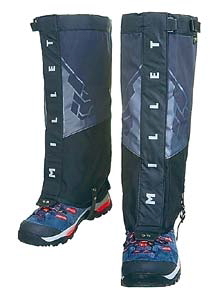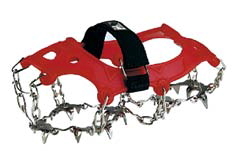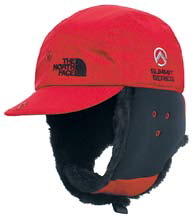For Kim Sun-bok, a member of a local hiking club, the coldest among 10 years of Sunday excursions was a trip to Mount Hallasan on the southern island of Jeju. “At the beginning of the hike it was not too cold, but as we got closer to the top the wind picked up,” she said. “The wind was blowing so hard I was almost knocked over and my legs were shaking from the cold.”
Though for most of the year hiking in Korea is a casual pursuit, in wintertime thorough trip preparation and appropriate gear may help one avoid being blown off the mountain.
Though for most of the year hiking in Korea is a casual pursuit, in wintertime thorough trip preparation and appropriate gear may help one avoid being blown off the mountain.

Comfort and safety on the mountain start with a hooded windproof jacket, long underwear, gloves, thick socks and a sturdy pair of waterproof shoes.
Because one often encounters icy patches ― glazed-over rocks in areas like Mount Bukhansan National Park in Seoul can be especially treacherous ― local hikers use simple devices referred to here as “eisen.” Short for the German “steigeisen” (steep-path iron), they are a cheap, convenient version of crampons. While using them in the Himalayas or the Andes could lead to disaster, they are usually quite adequate in Korea.


Varying from simple bands with only two spikes to chains with 14 spikes, eisens’ rubber straps make them easy to snap on to hiking boots. Many Korean hikers also wear gaiters to prevent snow from getting into their shoes.
Hiking poles are ubiquitous among Korean hikers not only in winter but year-round, and are especially recommended for those with weak knees or heavy packs. Ice axes are rarely seen and seldom needed.
To make more precise decisions about what to wear and what to bring, check the forecast on a site like www.mountain-forecast.com. For a hint of conditions on the peaks and ridges, check not only the daily highs and lows but also the wind chill factor ― if the wind is blasting at 50 kilometers per hour, minus 10 degrees Celsius will feel like minus 22.
As of Jan. 23, reservations could be made for winter shelters on Mounts Seoraksan, Jirisan and Deokyusan. Since heavy snowfall can lead to sudden closures, be sure to check the national park website (main.knps.or.kr) and call the relevant park office if in doubt.
By Matthew C. Crawford (mattcrawford@heraldcorp.com)
-
Articles by Korea Herald











![[Hello India] Hyundai Motor vows to boost 'clean mobility' in India](http://res.heraldm.com/phpwas/restmb_idxmake.php?idx=644&simg=/content/image/2024/04/25/20240425050672_0.jpg&u=)








